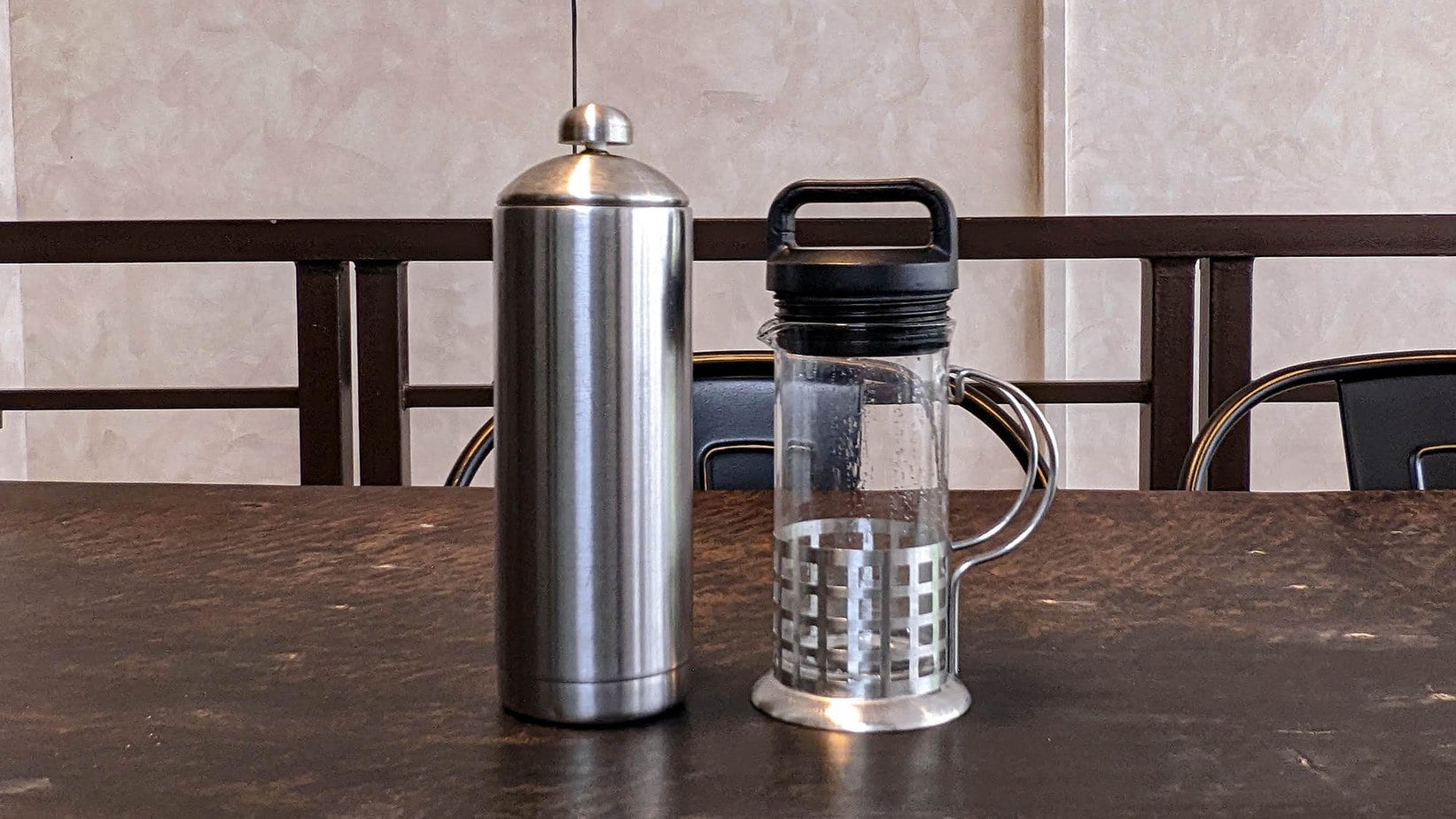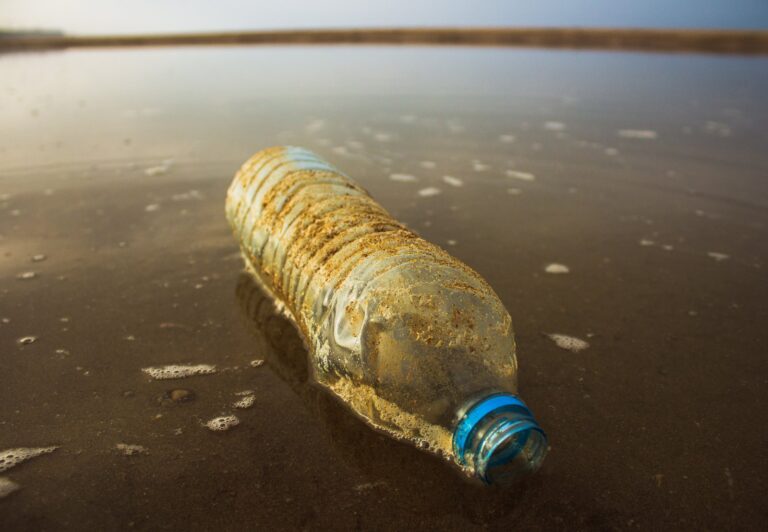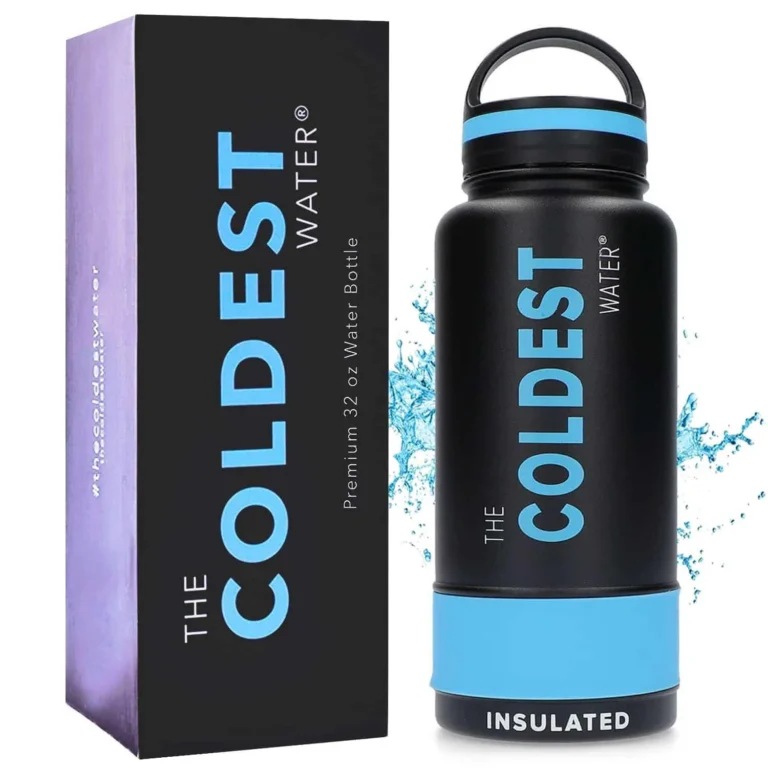Have you ever given much thought to the type of water bottle you use on a daily basis? Do you prefer glass or stainless steel? While both materials have their benefits, the debate on which is better rages on. From environmental impact to durability and design, there are several factors to consider when choosing between a glass and stainless steel water bottle. In this post, we will delve into the various aspects of these popular materials and weigh the pros and cons of each to help you make an informed decision. So, grab a refreshing drink and let’s jump right in!
Rising popularity of reusable water bottles
Reusable water bottles have been gaining popularity in recent years, and for good reason. With the increasing awareness about the environmental impact of plastic waste, more and more people are opting for reusable options. Stainless steel and glass water bottles have emerged as the top choices in this regard. They are not only durable and long-lasting but also free from harmful chemicals, unlike plastic bottles. Additionally, both stainless steel and glass are easily recyclable, making them more sustainable choices. Moreover, these bottles retain the taste and odor of water, ensuring a refreshing and enjoyable experience. Their lightweight and portable nature further add to their appeal. Overall, the rising popularity of reusable water bottles signifies a shift towards a more sustainable and environmentally-conscious lifestyle.
Purpose of the blog post
The purpose of this blog post is to provide readers with a comprehensive comparison of glass and stainless steel water bottles. We aim to inform and educate individuals who are looking to make an informed decision on which type of bottle is best suited for their needs. By presenting factual data and highlighting various aspects such as durability, weight, environmental impact, taste retention, and temperature retention, we hope to give our readers a clear understanding of the pros and cons of each material. Ultimately, the goal is to help readers make an informed choice that aligns with their personal preferences and intended usage scenarios. Whether you prioritize longevity, portability, sustainability, or taste, this blog post will provide the necessary information to make a well-rounded decision.
Comparing glass vs stainless steel water bottles
When it comes to choosing a water bottle, there are many factors to consider, and two popular options are glass and stainless steel. Both materials have their advantages and disadvantages, so it’s important to weigh them carefully.
Glass bottles are often perceived as fragile, but they are actually quite durable and made with thick glass that can withstand some force. They are also great for preserving the taste and odor of your beverages, as they do not retain any flavors. However, glass bottles can be heavier to carry and are not very insulated, meaning your drinks will return to room temperature quickly.
On the other hand, stainless steel bottles are known for their durability and longevity. They can withstand high impact and are resistant to scratches and dents. Stainless steel bottles also have better insulation properties, keeping your drinks hot or cold for longer periods. However, they may have a metallic taste initially, but that usually fades after the first wash.
Ultimately, the choice between glass and stainless steel comes down to personal preference and usage scenarios. Consider factors like durability, weight and portability, environmental impact, taste and odor retention, and temperature retention to make an informed decision.
Comparison
A. Durability and Longevity
When it comes to durability and longevity, both glass and stainless steel water bottles have their own advantages. Glass bottles are made with thick and durable glass that can withstand a fair amount of force before breaking. However, they can still be fragile and need to be treated with care. On the other hand, stainless steel bottles are known for their durability and can last for years. Although they can scratch and dent fairly easily, this does not affect their functionality. So, if you’re looking for a water bottle that can withstand everyday use and potential accidents, stainless steel might be the better option. However, if you’re careful with your belongings and prioritize a non-reactive material, glass could be a great choice.
1. Glass
Glass water bottles are often seen as the more fragile option, but they are actually quite durable. Made with thick glass that requires significant force to break, glass bottles can withstand falls and accidents. Plus, they offer the advantage of not altering the taste of your beverage, unlike metal-based water bottles. Glass bottles are also 100% recyclable, making them a more sustainable option compared to stainless steel. However, glass bottles can be heavier to carry due to the thicker glass used for durability. Additionally, they do not provide insulation, which means that hot or cold liquids will return to room temperature quickly. Despite these factors, glass water bottles are a popular choice for those who prioritize taste and sustainability.
2. Stainless Steel
When it comes to stainless steel water bottles, durability and longevity are among their top qualities. Stainless steel bottles are known for their strength and ability to withstand everyday wear and tear. They may easily get scratched or dented, but they will still hold up for years on end. Additionally, stainless steel bottles are reusable and recyclable, making them an eco-friendly choice. However, it’s important to note that the production of stainless steel does contribute to greenhouse gas emissions, which is a factor to consider. Furthermore, stainless steel bottles may have a metallic taste initially, but this usually goes away after the first wash. Overall, stainless steel water bottles offer durability, eco-friendliness, and a wide array of choices to suit personal preferences and usage scenarios.
B. Weight and Portability
When it comes to weight and portability, there is a noticeable difference between glass and stainless steel water bottles. Glass bottles tend to be heavier, which can make them less ideal for those who are always on the go or prefer lighter options. On the other hand, stainless steel bottles are much lighter and easier to carry around. Their sleek and compact design allows for convenient portability, whether you’re throwing it in your bag or holding it in your hand. So, if weight and portability are important factors for you, then a stainless steel water bottle would be the more suitable choice. It provides the convenience and ease of use that many individuals are looking for in a water bottle.
1. Glass
Glass water bottles have gained popularity due to their unique characteristics and benefits. Despite common misconceptions about glass being fragile, glass bottles are made with thick, durable glass that can withstand daily use. They offer a distinct advantage over stainless steel bottles by retaining the taste and odor of beverages without any metallic aftertaste. Glass is also a sustainable option as it is 100% recyclable and can be continuously melted and recycled to create new products. However, glass bottles are heavier and less portable compared to stainless steel bottles. Additionally, they do not provide insulation, meaning that beverages will reach room temperature quickly. Overall, glass water bottles are an excellent choice for those prioritizing taste and sustainability in their hydration needs.
2. Stainless Steel
Stainless steel water bottles are known for their durability and longevity. They are designed to last for years, but they can be prone to scratches and dents. These bottles are eco-friendly as they are reusable and recyclable, although the recycling process may take longer compared to glass. One disadvantage of stainless steel bottles is that they tend to have a metallic taste, but this usually goes away after the first wash. Additionally, stainless steel production emits high levels of carbon dioxide, contributing to global warming. On the other hand, glass water bottles are made with thick glass that is difficult to break. They are heavier than stainless steel but do not retain flavors. Glass bottles are also 100% recyclable, making them a more sustainable option.
C. Environmental Impact
When it comes to the environmental impact, both glass and stainless steel water bottles are much more sustainable options compared to plastic. Plastic water bottles, although cheaper to produce, contribute to pollution and take hundreds of years to decompose in landfills. On the other hand, both glass and stainless steel bottles have a longer lifespan and can be easily recycled. Glass is a non-porous material, meaning it does not retain flavors or odors, ensuring a clean and refreshing drinking experience. Stainless steel, on the other hand, is durable, resistant to high impact, and can keep liquids hot or cold for longer periods of time. By choosing either glass or stainless steel water bottles, not only are you making an eco-friendly choice, but you are also promoting a healthier lifestyle for yourself and the planet.
1. Glass
Glass water bottles have gained popularity in recent years due to their durability and environmental friendliness. Contrary to popular belief, glass bottles are not as fragile as they seem. They are made with thick glass that can withstand a fair amount of force before breaking. Glass also has the advantage of not altering the taste of your beverage, unlike metal-based water bottles. Additionally, glass is 100% recyclable, making it a sustainable choice for those concerned about the environment. However, glass bottles can be heavier and less insulated than stainless steel bottles, and they do not retain temperature well. Overall, if you prioritize taste and sustainability, glass water bottles are a great
2. Stainless Steel
Stainless steel water bottles have gained popularity due to their lightweight, durability, and insulation properties. They are a great option for those who prefer their beverages to stay hot or cold for extended periods of time. Stainless steel bottles are also reusable and recyclable, making them an eco-friendly choice. However, it’s important to note that stainless steel production contributes to greenhouse gas emissions, adding to the problem of global warming. Another factor to consider is the metallic taste that stainless steel bottles can have initially, although this usually goes away after the first wash. Despite these drawbacks, stainless steel water bottles are a practical and sustainable option for many individuals.
D. Taste and Odor Retention
When it comes to taste and odor retention, both glass and stainless steel water bottles have their own advantages. Glass bottles are known for not retaining flavors or odors from previous drinks. This means that you can enjoy your water without any unwanted aftertaste. On the other hand, stainless steel bottles can sometimes retain the taste of metal, especially if they are not properly cleaned. However, this is a minor concern for many people, and stainless steel bottles are still a popular choice due to their durability and insulation properties. Ultimately, the choice between glass and stainless steel comes down to personal preference and how important taste and odor retention are to you.
1. Glass
Glass water bottles have become increasingly popular in recent years due to their numerous advantages. One of the main reasons why people choose glass over other materials is because it doesn’t change the taste of the beverage stored inside. Unlike metal-based water bottles, glass doesn’t alter the flavor, ensuring a pure and untainted drinking experience. Additionally, glass water bottles are highly durable, made with thick glass that is resistant to breaking. Although they may be heavier compared to other materials, their strength and longevity make up for it. With glass water bottles, there’s no need to worry about dents or scratches that can affect the bottle’s appearance. Glass is a reliable choice for those who prioritize maintaining the taste and quality of their beverages.
2. Stainless Steel
When it comes to stainless steel water bottles, durability and longevity are key factors to consider. Stainless steel bottles are known for their long-lasting nature, as they can withstand years of use without easily denting or scratching. However, it is important to note that stainless steel production does contribute to greenhouse gas emissions, making it less environmentally friendly compared to glass bottles. Additionally, stainless steel bottles may have a metallic taste initially, but this usually goes away after the first wash. Overall, stainless steel bottles are a great option for those looking for a durable and reusable water bottle that can keep their beverages hot or cold for extended periods of time.
E. Temperature Retention
When it comes to temperature retention, both glass and stainless steel water bottles have their advantages. Glass is known for its ability to retain heat, making it ideal for keeping hot beverages warm for longer periods of time. On the other hand, stainless steel water bottles, especially those with double-walled insulation, are excellent at keeping drinks cold for hours. The vacuum-sealed walls of stainless steel bottles prevent heat transfer, ensuring that cold drinks stay chilled throughout the day. So, whether you prefer your drinks hot or cold, both glass and stainless steel options have you covered. Ultimately, the choice between the two will depend on your personal preference and usage scenarios.
1. Glass
Glass water bottles are a popular choice for those looking for a sustainable and eco-friendly option. Despite their fragile reputation, glass bottles are actually quite durable, made with thick glass that can withstand a fair amount of force. They may be heavier to carry due to their thicker glass, but they do not alter the taste of your beverage like some metal-based water bottles do. Glass bottles are also 100% recyclable, meaning they can be melted and recycled to make new glass products continuously. So, if you’re looking for a safe and environmentally friendly option that keeps your water untainted by any weird residual flavors, glass water bottles are definitely worth considering.
2. Stainless Steel
Stainless steel water bottles are known for their durability and longevity. While they may scratch and dent fairly easily, these bottles can still last for years. The fact that stainless steel is reusable and recyclable further adds to their appeal. However, it is important to note that stainless steel production contributes to greenhouse gas emissions and therefore has an environmental impact. Additionally, stainless steel bottles tend to have a metallic taste initially, but this typically diminishes after the first wash. In terms of temperature retention, stainless steel bottles excel at keeping drinks cold for up to 24 hours. Overall, stainless steel water bottles offer a durable and eco-friendly option for those looking for a long-lasting and well-insulated bottle.
Personal preference and usage scenarios
B. Personal preference and usage scenarios play a significant role in determining whether a glass or stainless steel water bottle is the better choice for an individual. Some people prefer the aesthetics and feel of a glass bottle, as it gives a unique drinking experience and doesn’t alter the taste of the beverage. On the other hand, stainless steel bottles are favored by those who prioritize durability and longevity, as they are more resistant to scratching and denting. Additionally, stainless steel bottles are better at retaining temperature, making them ideal for keeping drinks hot or cold for extended periods. Ultimately, the decision comes down to personal preferences and specific usage scenarios. Whether it’s for outdoor activities, travel, or everyday use, individuals should choose the option that best suits their needs and aligns with their values.




